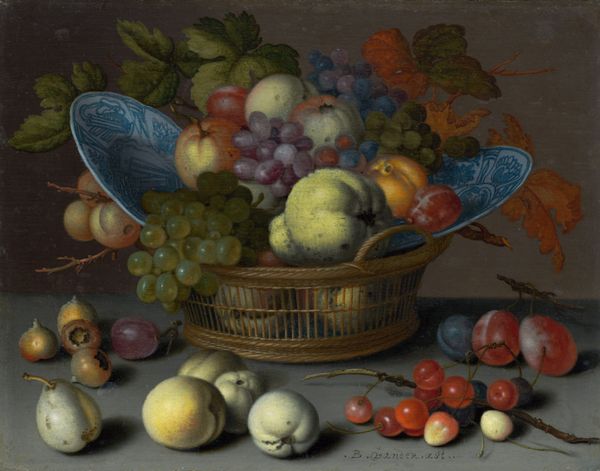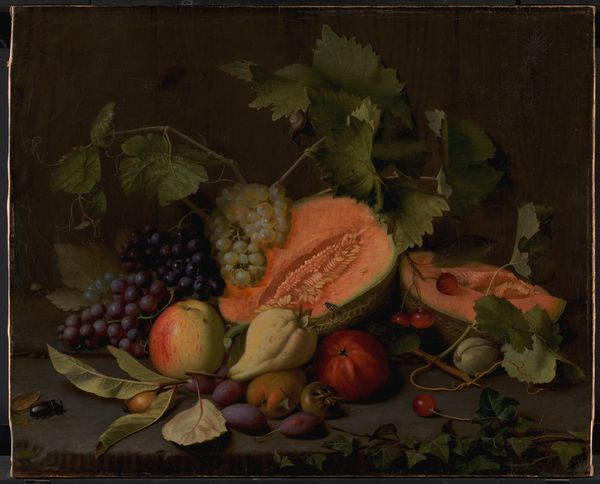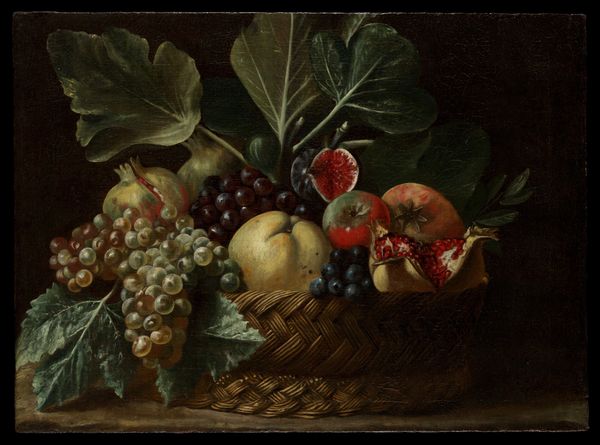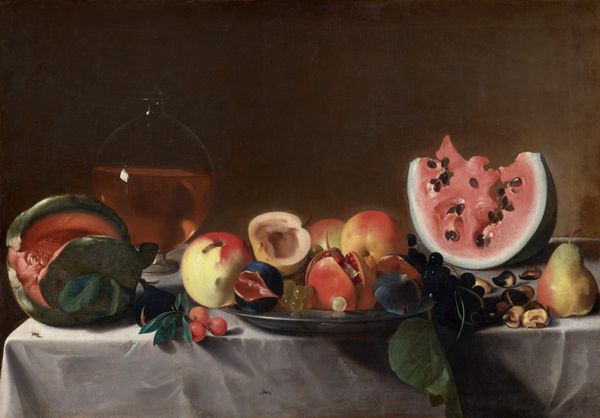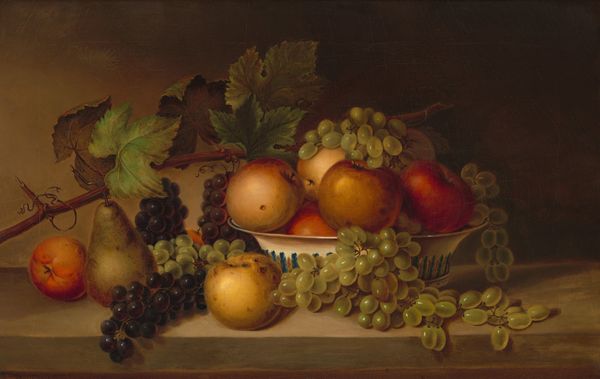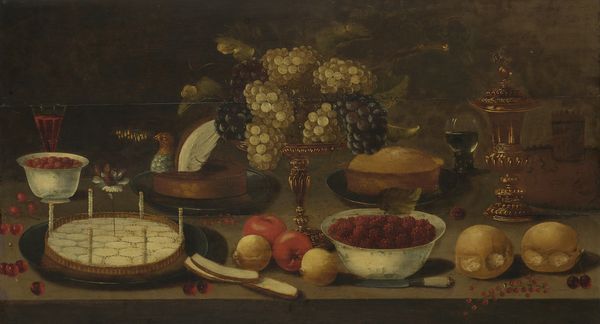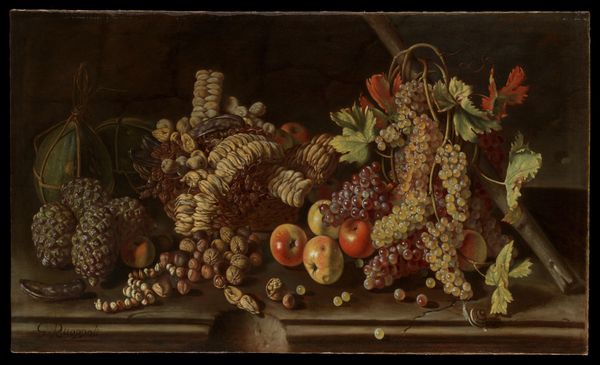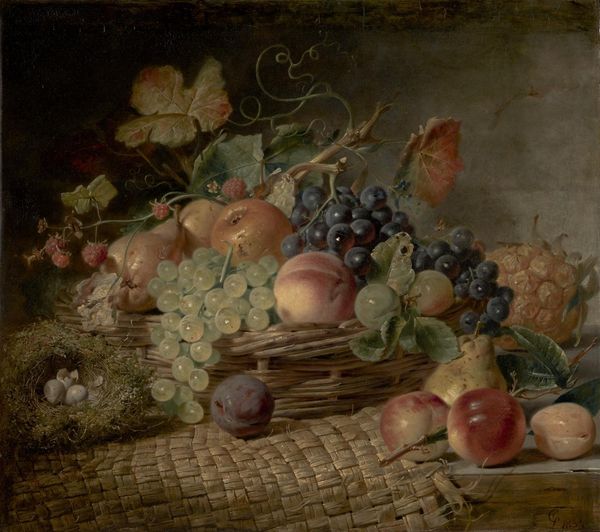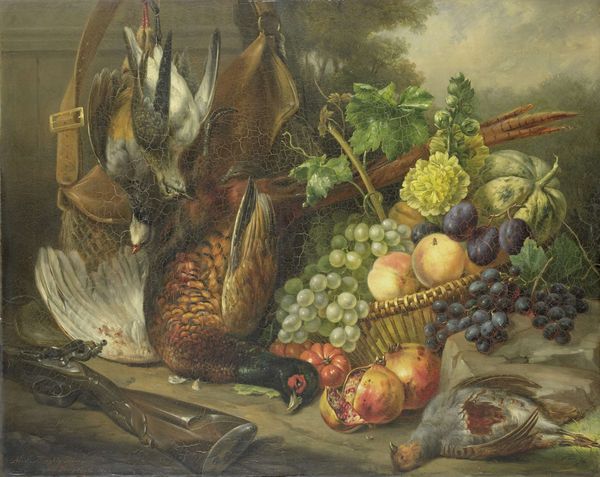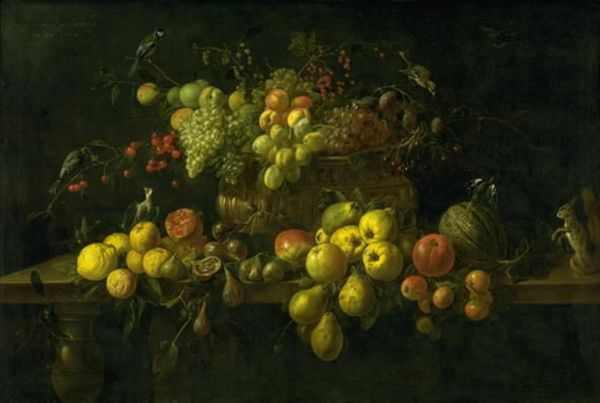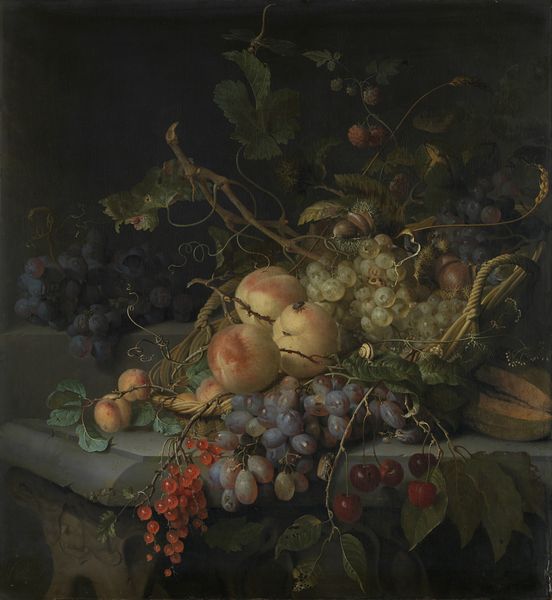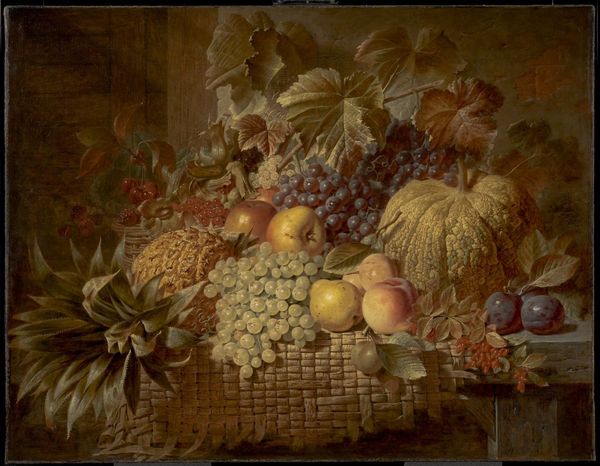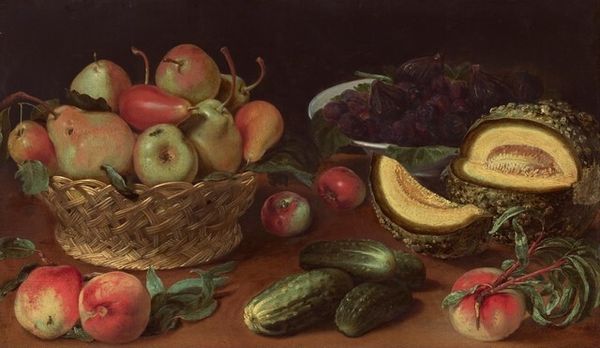
panel, tempera, painting, oil-paint, canvas
#
panel
#
tempera
#
dutch-golden-age
#
painting
#
oil-paint
#
canvas
#
underpainting
#
painting painterly
#
food art
#
genre-painting
#
realism
Dimensions: 91.5 cm (height) x 120 cm (width) (Netto)
Curator: Welcome. Here we have Floris van Schooten’s “Fruit Basket,” believed to have been painted between 1632 and 1636. It’s oil on canvas, and part of the collection at the SMK, the Statens Museum for Kunst. Editor: It’s almost overwhelmingly abundant, isn’t it? Like a cornucopia’s quiet cousin. All that produce presented with such a solemn gravity… you could build a very elaborate emotional landscape just by shuffling these apples and plums around. Curator: The composition adheres to a distinct structure. Notice the deliberate arrangement, how it follows a strong horizontal line created by the edge of the table. Editor: Which serves to organize the near chaos of the overflowing baskets and bowls, doesn’t it? Like a stage for a very still performance. It almost feels theatrical, like these fruits are actors waiting for their cue. Curator: Observe, too, the tonal gradations. The darker background serves to highlight the textures and colors of the fruits, and particularly that very calculated variation. Editor: Definitely. The lighting emphasizes the individual textures; you can almost feel the velvety skin of the peaches and the smooth coolness of the grapes. And there’s a real tension between the realistic portrayal of the objects and the obviously staged arrangement of them all. Makes you think about artifice and truth… Curator: Exactly. It embodies the genre-painting tradition of the Dutch Golden Age, capturing the realism characteristic of that period, while simultaneously reflecting broader ideas of commerce and trade. The painting subtly implies social narratives, and the era’s evolving relationship with the natural world. Editor: I keep coming back to this sense of something hidden under the surface. Beyond the literal depiction, there's a whisper of temporality, the fleeting nature of pleasure… all these beautiful, ripe things destined to decay. It makes the enjoyment of them feel more poignant. Curator: I find that a keen interpretation. We see that duality within many examples of 17th-century still life painting; the presence of visual pleasure shadowed by intimations of morality and fate. Thank you. Editor: A fruitful exchange, so to speak! Now, I'm feeling a little peckish. Perhaps that was Van Schooten’s intention.
Comments
No comments
Be the first to comment and join the conversation on the ultimate creative platform.
